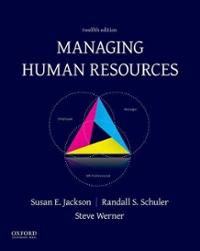As they surveyed an industry on its knees in the early 1980s, the leaders of the Forest
Question:
As they surveyed an industry on its knees in the early 1980s, the leaders of the Forest Products Company (FPC) and its parent, the Weyerhaeuser Corporation, saw a far different face of domestic and global competition than the one Weyerhaeuser and its subsidiaries had successfully competed against for so long. They knew how to compete—and win—against a large-firm, commodity-lumber business. But that business was in its death throes, and what was emerging from the ashes presented an entirely new set of challenges that would require a radical change in Weyerhaeuser’s strategy. The new competitors weren’t the old monolithic organizations but were instead small mills—lean, mean, and configured so that their products could be tailored to customer demand and their product lines could change rapidly according to need. They were nonunion, owner-operated, and entrepreneurial; and in this configuration, they were running the lowest-cost, most market-oriented operations around.
Going out of business was not an alternative anyone cared to think about, but if things didn’t change, it would be a definite possibility. Charley Bingham, CEO of the Forest Products Company, knew that something had to be done—and soon. He gathered his top dozen managers, and together they decided that a massive reorganization was called for, accompanied by a radical change in strategy. According to Bingham, the change in strategy went something like this: “Approximately 80% of our sales dollars in 1982 represented products sold as commodities.
By 1995, we resolved that we must reverse the proportions.”
The massive reorganization at FPC mirrored that occurring at its parent company. The Weyerhaeuser Corporation decided to drastically decentralize. The three operating units, of which FPC was one, were given free rein on how to do their business. Given this scenario, Bingham and his team decided they needed to create an organization capable of acting and responding just like their competitors. Thus, they created 200 profit centers, with each center being largely responsible for its own bottom line.
This restructuring soon proved to be only a first step in the right direction. The ability of FPC to implement its new strategy was being undermined by low morale, which was pervasive.
In addition, many middle managers, who were needed to actually carry out the change, were pessimistic about the possibility of sustained future success. Silently, they even questioned their own ability to operate the profit centers.
With insights from Horace Parker, director of executive development at FPC, the rest of the top team came to realize that there would have to be a total transformation of the organization: the corporate culture, knowledge base, skill levels, style of leadership, and team orientation would all have to change, for all employees. With 18,000 employees across the United States, Parker wasn’t sure where to start. The others said they would help, but Horace had to tell them what to do. Horace, of course, is waiting to hear what you have to tell him.
CASE QUESTIONS
1. Where does Horace start? What programs does he put in place to deal with the needs of corporate culture, knowledge, skills, leadership, and team orientation?
2. How does he go about developing the programs that he needs to put in place? Does he do it by himself ? Can he buy off-the-shelf programs?
3. What time frame does Horace need to implement the programs to make the change successful? If he deals only with executive development programs, does he need to be concerned with programs for middle managers and below? How does he do this?
Step by Step Answer:

Managing Human Resources
ISBN: 978-8522104291
12th Edition
Authors: Susan E Jackson, Randall S Schuler, Steve Werner





